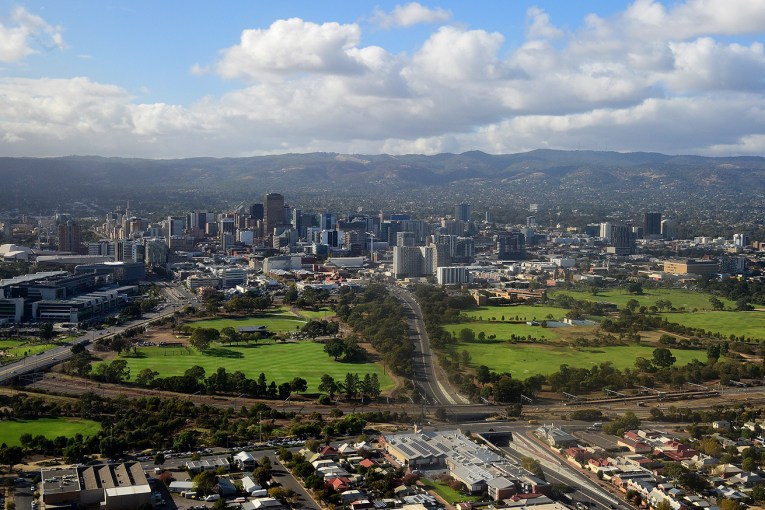Inflation peak to cause even higher mortgage bills in early 2023, economists say

Australian home owners are being warned there will be at least two more interest rate hikes in early 2023 as the Reserve Bank moves to curb the fastest annual inflation rate in more than 30 years.
The headline December quarter inflation figures, published on Wednesday, would not surprise central bankers because the 7.8 per cent annual rate was less than forecast, economists said.
But inflation is rapidly broadening across Australia and its causes are shifting from global supply chain disruptions to local factors such as stronger wages growth and stubbornly high demand.
And that will concern the Reserve Bank, KPMG senior economist Sarah Hunter said, because it’s a sign that inflation expectations are trending upwards despite huge rate hikes from the RBA in 2022.
“It’s the broad-based nature of local price rises that will have them concerned,” Dr Hunter said.
“They are going to want to signal a strong commitment to getting inflation back to 2 to 3 per cent.”
The RBA hiked rates at a record pace between May and December, increasing its target cash rate from 0.10 per cent to 3.1 per cent.
In the process, more than $800 was added to monthly bills for home owners paying down a typical 25-year $500,000 mortgage.
Economists are expecting a further 0.25 percentage point interest rate hike when the RBA meets on February 7, which would add another $80 to typical bills.
From there, BIS Oxford senior economist Sean Langcake expects one further 0.25 percentage point increase before the RBA pauses to assess the effects of their rapid rate hikes.
Doing too little risks allowing inflation to remain high for too long, while doing too much could drive the economy into a recession, which economists are warning is a real possibility.
“It’s going to be a real balancing act for the RBA,” Mr Langcake said.
Global pressures cool, but local inflation broadens
Mr Langcake and many other economists expect the December quarter figures will be the peak annual inflation rate in Australia ahead of an extended slowdown in the pace of price increases.
That’s because construction costs have peaked and the worst of the 2022 fuel price spike will fall out of the annual figures, which should offset higher electricity prices.
Inflation for goods – products such as home furnishings and clothing – has also begun easing from 9.6 per cent annually to 9.5 per cent in December, a sign that the price spikes flowing into Australia from overseas were improving.
“Global inflation pressures are cooling a bit … that’s where the good news lies,” Mr Langcake said.
But inflation is still expected to remain above the RBA’s target band for several years, and there’s fresh concern about how the drivers of price increases are changing across the nation.
Specifically, Mr Langcake said inflation is increasingly being caused by local factors, such as firms adjusting prices to cover higher wage costs in an environment where demand is high.
This is reflected in higher inflation for services – including insurance and health care – which reached 5.5 per cent annually over the December quarter, the fastest rate seen since 2008.
“It’s the breadth of inflation, and some of the components that are driven a bit more by wage pressure that seem to be building,” Mr Langcake said.
Dr Hunter agreed that price pressures locally are broadening, with underlying inflation – a measure of price increases that strips out the most volatile changes – rising to 6.9 per cent in annual terms over the December quarter, up from 6.1 per cent over the September quarter.
“It is inevitable because with the step-up in wages growth the increase in that cost base for businesses has been significant,” Dr Hunter said.
“The demand base in the economy through the second half of last year were also buoyant so many businesses were able to pass on higher costs.”
Rate hikes yet to be felt
Looking ahead to the RBA’s plans for 2023, Commonwealth Bank chief economist Gareth Aird noted on Wednesday that the three percentage points of rate hikes passed in 2022 have yet to be felt in many parts of the economy.
“High inflation last year largely reflected the massive fiscal splurge over 2020 and 2021, coupled with ultra‑loose monetary policy, to support the economy through the pandemic,” he said.
“The key point is that rapid rate hikes in 2022 will impact demand for goods and services in the economy and by extension price changes in 2023 and 2024.”
Mr Aird expects the RBA will pass through another 0.25 percentage point rate hike in February before pausing in March to assess how households respond to previous rate hikes from 2022.








